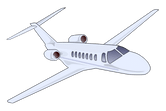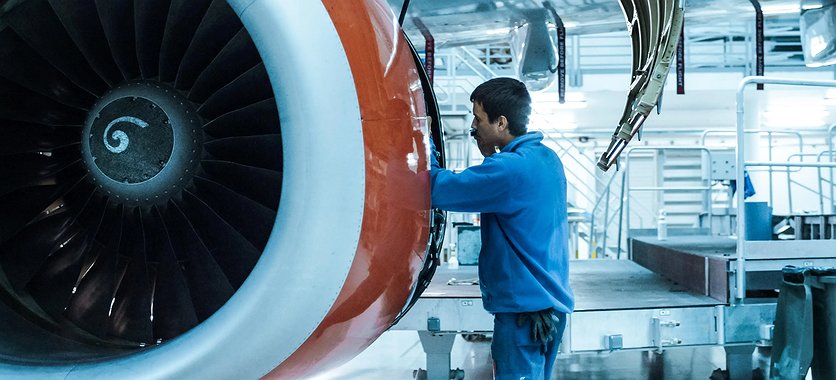3 Significant ways to ensure safety with Aircraft Maintenance Engineers




Loading...

In the fast-evolving aviation industry, the role of an Aircraft Maintenance Engineer (AME) is both indispensable and demanding. These professionals serve as the silent guardians of the sky, responsible for ensuring that every aircraft meets the highest standards of safety and performance.
In the fast-evolving aviation industry, the role of an Aircraft Maintenance Engineer (AME) is both indispensable and demanding. These professionals serve as the silent guardians of the sky, responsible for ensuring that every aircraft meets the highest standards of safety and performance. As aircraft become increasingly complex with advanced avionics and automation systems, the skills needed for aircraft maintenance engineer roles have become more specialized and crucial than ever before. From technical expertise to communication and problem-solving, AMEs must possess a broad and refined skill set to excel.
Whether you're exploring how to become an AME or you're currently pursuing an AME course, understanding the core competencies that define success in this field is essential. Let’s explore the top skills, qualifications, and personal attributes that aspiring Aircraft Maintenance Engineers must develop—and how enrolling in a DGCA approved AME course in India can set you on the right path.
Before diving into the skillset, it's important to understand what the job entails. An AME is responsible for inspecting, repairing, maintaining, and certifying aircraft before flight. They are licensed professionals who hold the authority to declare an aircraft airworthy. Their job directly impacts passenger safety, making it one of the most responsible and respected positions in aviation.
If you’re wondering how to become aircraft maintenance engineer, the journey starts with enrolling in a DGCA approved AME course in India. These programs are tailored to meet global aviation standards and combine classroom learning with rigorous hands-on AME training at certified Maintenance Repair Organisations (MROs).
Without a doubt, technical skills required for AME professionals are the cornerstone of the job. Aircraft are intricate machines composed of electrical, mechanical, hydraulic, and pneumatic systems. To work efficiently and safely, AMEs must be highly skilled in understanding and handling these systems.
Mechanical Aptitude: Ability to work on turbines, piston engines, airframes, and control systems.
Electrical and Electronic Knowledge: Especially important for those pursuing Avionics (B2) categories.
Proficiency in Tools and Equipment: From torque wrenches to digital diagnostic devices.
Understanding of Blueprints and Schematics: AMEs must interpret complex technical manuals and diagrams.
These technical skills required for AME roles are extensively taught in top-tier aircraft maintenance engineering colleges, which emphasize both theory and application.
A proficient AME must have in-depth knowledge of aircraft systems, including propulsion, fuel, electrical, landing gear, hydraulic, and avionics systems. This level of familiarity allows engineers to detect faults accurately and implement the most effective maintenance strategies.
Enrolling in a DGCA approved AME course in India ensures students are exposed to a wide range of aircraft models and components, preparing them for real-world scenarios. Courses offered by the best AME colleges also include training modules on aircraft system integration, troubleshooting, and inspection procedures.
When a malfunction is detected, it’s up to the AME to determine the root cause and fix it swiftly. This requires more than technical ability—it demands analytical thinking, attention to detail, and a methodical approach to problem-solving.
The ability to troubleshoot is one of the most valued skills needed for aircraft maintenance engineer roles. It ensures minimal downtime, cost efficiency, and operational safety. Students are trained in diagnostic techniques as part of their AME course, learning how to approach problems strategically and under pressure.
Aircraft maintenance is a zero-error domain. A minor oversight can have major consequences. Therefore, AMEs must demonstrate meticulous attention to detail in every task—from documenting inspections to tightening components. This precision helps maintain compliance with regulatory standards and enhances flight safety.
During AME training, students are repeatedly evaluated on their attention to detail through simulations, practical assignments, and real-time aircraft inspections. This habit is ingrained from day one in top aircraft maintenance engineering colleges.
Aircraft maintenance is governed by strict national and international standards. In India, the Directorate General of Civil Aviation (DGCA) sets the regulations. AMEs must understand CAR 66, CAR 145, and other applicable frameworks to ensure that their maintenance actions meet legal and safety standards.
A DGCA approved AME course in India emphasizes regulatory training. Students learn how to document work, conduct audits, and ensure aircraft comply with government regulations—skills that are crucial to obtaining and retaining an AME license.
Effective communication is a non-negotiable skill in aviation maintenance. Engineers must relay technical information to pilots, supervisors, and fellow engineers clearly and concisely. Miscommunication can lead to misdiagnosed faults or safety hazards.
In addition, teamwork is crucial in hangars and workshops where multiple engineers work on the same aircraft. Coordinating tasks, sharing information, and managing timelines are part of everyday responsibilities.
The qualities of an aircraft maintenance engineer often include excellent interpersonal and communication skills, which are honed through group activities and collaborative projects in AME courses.
Technology in aviation is ever-changing. From hybrid-electric propulsion systems to AI-based maintenance monitoring, the tools and methods in aircraft maintenance evolve constantly. Successful AMEs are those who embrace lifelong learning.
The best AME colleges incorporate the latest industry trends, emerging technologies, and soft skills training in their curriculum. They encourage students to pursue certifications, attend seminars, and continuously upgrade their knowledge even after becoming licensed engineers.
Aircraft maintenance often operates on strict schedules. Delays in inspections or repairs can disrupt flight operations and result in financial losses. AMEs must be capable of managing time efficiently and making decisions quickly without compromising safety.
Decision-making is especially critical during aircraft-on-ground (AOG) situations, where time-sensitive solutions are required. These competencies are nurtured during AME training through scenario-based learning and simulated emergencies.
Aircraft maintenance can be physically demanding. Engineers may need to crawl into tight spaces, climb ladders, or work in challenging weather conditions. Good physical health and stamina are essential for performing such tasks safely.
Moreover, manual dexterity is important when working with intricate components and tools. The skills needed for aircraft maintenance engineer roles often extend beyond the cognitive domain to physical capabilities, which are emphasized during workshop sessions and practical modules in AME courses.
As custodians of passenger safety, AMEs must uphold the highest standards of ethics and professionalism. They are expected to report issues honestly, refuse unsafe practices, and take responsibility for the aircraft they certify.
Ethical training is a crucial component of the DGCA approved AME course in India, where students are instilled with values of integrity, accountability, and transparency from the beginning of their journey.
To begin your career in this field, understanding how to become aircraft maintenance engineer is the first step. Here's a simplified path:
Throughout this journey, selecting the right institution is vital. Some of the best AME colleges in India—like the Institute of Aeronautics & Engineering (IAE), Bhopal—offer dual degree options, robust MRO access, and industry-aligned training. They are known for delivering quality AME training aligned with current aviation demands.
The global aviation market is booming, and India is poised to become the third-largest aviation market by 2030. This growth translates into an increased demand for skilled AMEs. From airlines to defense, from cargo to private jets—career opportunities are vast.
Graduates from reputed aircraft maintenance engineering colleges can explore roles such as:
These roles offer both job stability and handsome remuneration, especially with experience and additional certifications.
Succeeding as an Aircraft Maintenance Engineer is about more than passing exams—it's about developing a rich skillset, cultivating professionalism, and committing to continuous learning. Whether you're just beginning to explore how to become a AME or you're currently enrolled in a DGCA approved AME course in India, focusing on the skills mentioned above will prepare you for a safe and rewarding career in aviation.
With a blend of technical prowess, soft skills, and ethical responsibility, AMEs uphold the integrity of global aviation. And with the right training from the best AME colleges, you can confidently join their ranks, equipped with all the skills needed for aircraft maintenance engineer roles in the modern aviation ecosystem.
Enquire